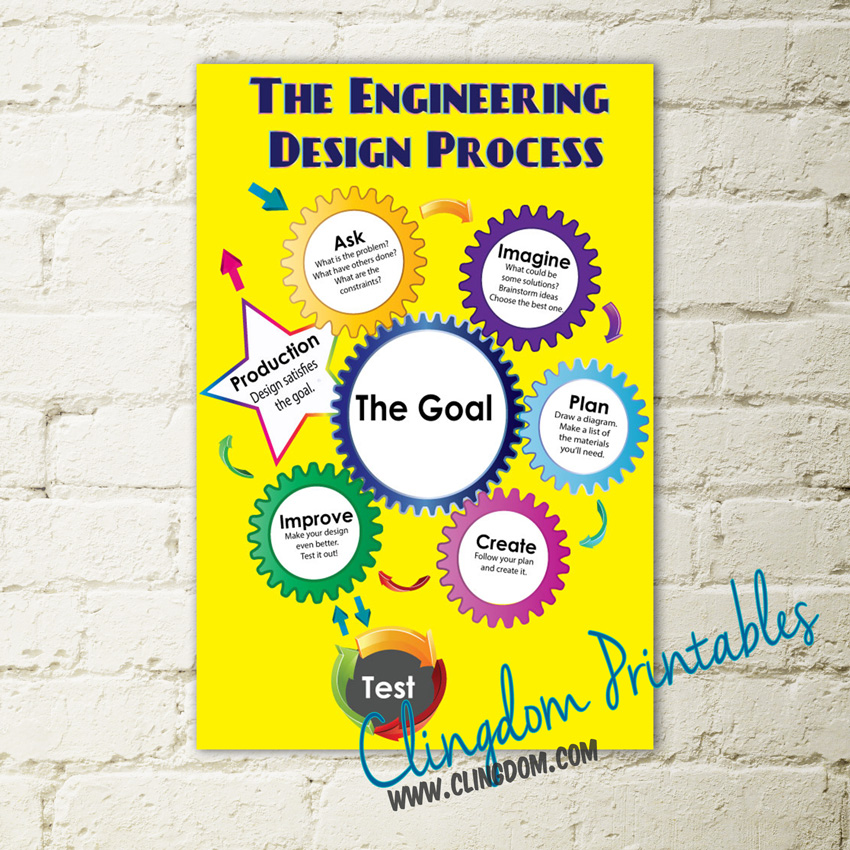Table Of Content

Overarching themes of the engineering design process are teamwork and design. Project-based learning engages learners of all ages—and fosters STEM literacy. It is worth noting that the MYP Design Cycle is similar to the engineering design process steps. The engineering design process is nearly always iterative in nature.
Hands-on Activity
This often means balancing your resources, such as time and cost. These parameters narrow the scope of what you can address in your solution and ask you to make decisions about your project’s development path going forward. The parameters can change over time and these decisions can be reevaluated as your project continues. Still, considering your available resources will help you to narrow your options to the most feasible ones for your current set-up.
Pre-Req Knowledge
After changing the design, the process of prototyping and evaluating is repeated. The design process in which the processes are iterated is often called a spiral design process. Review the engineering design loop by conducting the pre-activity assessment described in the Assessment section. This asks the teams to engage in a 10-minute design challenge and record their efforts to complete each step in the process. As a class, discuss any questions that arise about the design loop.
Learning Objectives
Students first identify a need—a problem to solve—through the GRASPS scenario model. They also get to know the beneficiaries of the solution to the problem through open-ended questions and discussion. Investigation and research build expertise to solve the problem.
Students pretend they are agricultural engineers during the colonial period and design a miniature plow that cuts through a "field" of soil. They are introduced to the engineering design process and learn of several famous historical figures who contributed to plow design. Whether on Earth or in space, life-threatening illnesses may occur if the water we drink is of poor quality. It’s up to your students to design and build a filtration system for the International Space Station so they can guarantee astronauts get the safe and clean water they need.
The Future of Chemical Engineering in the Era of Generative AI - The Chemical Engineer
The Future of Chemical Engineering in the Era of Generative AI.
Posted: Thu, 28 Sep 2023 07:00:00 GMT [source]
They choose a problem as a group, and then follow the engineering design process to come up with and test their design solution. Student pairs experience the iterative engineering design process as they design, build, test and improve catching devices to prevent a "naked" egg from breaking when dropped from increasing heights. To support their design work, they learn about materials properties, energy types and conservation o... Students engage in the second design challenge of the unit, which is an extension of the maze challenge they solved in the first lesson/activity of this unit. Students extend the ideas learned in the maze challenge with a focus more on the robot design.
Concept generation
Engineers use the engineering design process when brainstorming solutions to real-life problems; they develop these solutions by testing and redesigning prototypes that work within given constraints. Students are introduced to the concept and steps of the engineering design process and taught how to apply it. In small groups, students learn of their design challenge (improve a cast for a broken arm), brainstorm solutions, are given materials and create prototypes. The aluminum watercraft prototype problem is a very low-budget engineering design process example and an easy way to introduce EDP. It can also be a commitment to a long-term stem project if you decide to go deep into the subsets of the engineering design process! Whether you’re looking for engineering design challenges for elementary or middle school students, there are many resources in this post to help your students leverage STEM for meaningful learning.

Students perform research and design prosthetic prototypes for an animal to use for its survival. They then create habitats for their animals to live and model 3D prosthetics for the animals to use with modeling clay. Architectural DesignArchitectural design is a concept that focuses on components or elements of a structure translating the non-physical design problem into the physical building product.
The design should be technically sound, economically viable, and meet the needs of the market. It's important to understand that there are various framings/articulations of the engineering design process. Different terminology employed may have varying degrees of overlap, which affects what steps get stated explicitly or deemed "high level" versus subordinate in any given model. This, of course, applies as much to any particular example steps/sequences given here. While you’re testing the watercraft of one student or group, what are the other students doing? Although these notes may be subjective compared to the penny-count-at-failure data, they should be used in the evaluation to offer an additional perspective.
The engineering product design process follows specific steps to ensure every possibility is explored. Since the process promotes problem-solving, working in iterations, and extensive testing, the most innovative ideas bubble to the top for further development. Based on the testing results, the design may require further adjustments. Each cycle brings the design closer to the optimal solution that meets all specifications and constraints.
Students design and create their own nano-polymer smartphone case. Students choose their design, mix their nano-polymer (based in silicone) with starch and add coloring of their choice. While students think critically about their design, they embed strings in the nano-polymer material to optimize bo... Student teams design their own booms (bridges) and engage in a friendly competition with other teams to test their designs.

No comments:
Post a Comment